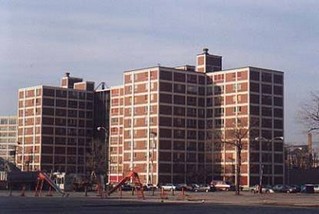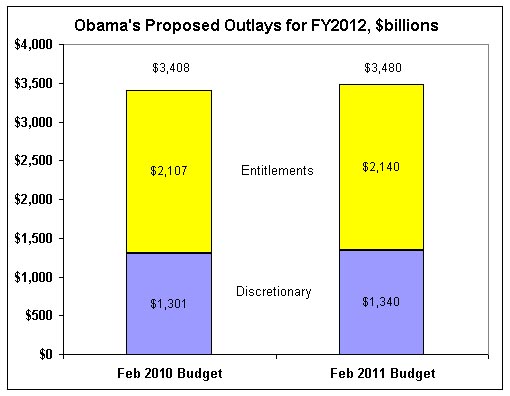09-13-2010

Permalink


Pruitt-Igoe
|
Subject: Your Property and Property Rights Are Being Dynamited!
"Those who cannot remember the past are condemned to repeat
it." — George Santayana
Urban Planning
|
From
Wikipedia:
In 1947, Saint Louis planners proposed replacement of DeSoto-Carr,
a run-down black neighborhood, with new two- and three-story
residential blocks and a public park. The plan did not
materialize; instead, Democratic mayor Joseph Darst, elected in
1949, and Republican state leaders favored total clearing of the
slums and replacing them with high-rise, high-density public
housing. They reasoned that the new projects would create a net
positive result to the city through increased revenues, new parks,
playgrounds and shopping space.
In 1948 voters rejected the proposal for a municipal loan to
finance the change, but soon the situation was changed with the
Housing Act of 1949 and Missouri state laws that provided
co-financing of public housing projects. The approach taken by
Darst, urban renewal, was shared by Harry S. Truman administration
[sic] and fellow mayors of other cities overwhelmed by
industrial workers recruited during the war. Specifically, Saint
Louis Land Clearance and Redevelopment Authority was authorized
to acquire and demolish the slums of the inner ring and then sell
the land at reduced prices to private developers, fostering
middle-class return and business growth. Another agency, Saint
Louis Housing Authority, had to clear land to construct public
housing for the former slum dwellers.
Pruitt-Igoe was a large urban housing project first occupied
in 1954 and completed in 1955 in the U.S. city of St. Louis,
Missouri. Shortly after its completion, living conditions in
Pruitt-Igoe began to decay; by the late 1960s, the extreme
poverty, crime, and segregation brought the complex a great
deal of infamy as it was covered extensively by the
international press. The complex was designed by architect
Minoru Yamasaki, who also designed the World Trade Center
towers.
At 3 PM on March 16, 1972 — 16 years after construction
was finished — the first of the complex's 33 buildings
was demolished by the federal government. The other 32
buildings were destroyed over the next four years. The
high-profile failure of Pruitt-Igoe has become an emblematic
icon often evoked by all sides in public housing policy debate.
|

|
|
Does anything above sound familiar? Government urban planners, with big
ideas and only the best interests of the "general public" at heart,
use the power of the state to seize huge tracts of private land, raze
everything in sight, hand over that land to private developers, and proceed
to create a new social and economic Shangri-La. Except things, for some
unexpected reason, don't really turn out as anticipated! Oh well, don't
worry. We'll get it right next time.
|
From
Wikipedia:
During the 1950s and 60s, New Haven [Connecticut] received more urban
renewal funding per capita than any city in the United States.
New Haven became the de facto showcase of the new modern redeveloped
city and plans for its downtown development were chronicled in
publications like Time and Harper's magazines throughout the 1950s
and 60s. Robert C. Weaver, Secretary of Housing and Urban Development
in the Lyndon Johnson Administration, once said that New Haven during
this time was the closest America has ever been to having a
"slumless" city.
Since 2000, downtown has seen an increasing concentration of new
restaurants, nightlife, and small retail stores. The area has
experienced an influx of hundreds of new and renovated apartment
and condominium units, and a significant number of up-scale
restaurants and nightclubs have opened.
|
Well, that certainly sounds more promising! However, as an architect
and a resident of New Haven from 1978-1988, I recall a slightly different
picture. Through the 60s, 70s and early 80s, despite being the home to
Yale University, New Haven was an economically depressed area.
All of that urban renewal money had been spent purchasing low-rent
buildings within the downtown core, knocking them down, and creating
temporarily gravel parking lots while wondrous new structures were
planned. However, by the early 1980s, after 25 years of "planning",
most of these areas remained open gravel lots, giving much of the city
the appearance of a bombed war zone rather than a thriving community.
But what about the claims of being a "slumless" city? Well, that might
well be true. Every building within New Haven that offered inexpensive
storefront rents and provided affordable housing on the upper floors
were demolished. All of these self-sufficient business owners were
displaced, as were their clientele, the low-income tenants who had
previously occupied these buildings. With no place left to live or work,
these people moved on to other cities or became new clients of the
state-run subsidized housing developments springing up everywhere.
While private development was being encouraged in the mid-to-late 80s
when I left the state, I think the article's reference to economic
expansion beginning to take real hold after 2000 — a 45-50 year
period of economic stagnation — is the ultimate indictment
against urban renewal. Strike two.
|
From
Wikipedia:
Kelo v. City of New London, 545 U.S. 469 (2005) was a case
decided by the Supreme Court of the United States involving the
use of eminent domain to transfer land from one private owner to
another to further economic development. The case arose from the
condemnation by New London, Connecticut, of privately owned real
property so that it could be used as part of a comprehensive
redevelopment plan which promised 3,169 new jobs and $1.2 million
a year in tax revenues. The Court held in a 5-4 decision
that the general benefits a community enjoyed from economic
growth qualified such redevelopment plans as a permissible
"public use" under the Takings Clause of the Fifth Amendment.
Following the decision, many of the plaintiffs expressed an intent to
find other means by which they could continue contesting the seizure
of their homes. Soon after the decision, city officials announced
plans to charge the residents of the homes for back rent for the five
years since condemnation procedures began. The city contended that the
residents have been on city property for those five years and owe
tens of thousands of dollars of rent. The case was finally resolved
when the City agreed to move Kelo's house to a new location. The
controversy was eventually settled when the city paid substantial
additional compensation to the homeowners.
In spite of repeated efforts, the redeveloper (who stood to get a
91-acre waterfront tract of land for $1 per year) was unable to
obtain financing, and the redevelopment project was abandoned. As
of the beginning of 2010, the original Kelo property was a vacant
lot, generating no tax revenue for the city.
In addition, in September 2009, Pfizer, whose upscale employees were
supposed to be the clientele of the Fort Trumbull redevelopment
project, completed its merger with Wyeth, resulting in a
consolidation of research facilities of the two companies. Shortly
after the merger closed, Pfizer decided to close its New London
facility in favor of one across the Thames River in nearby Groton
by 2011; this move coincides with the expiration of tax breaks on
the New London campus that also expire by 2011, when Pfizer's tax
bill on the property would have increased almost fivefold.
[As reported in the papers] "Pfizer Inc. announced that it is
closing the $350 million research center in New London that was the
anchor for the New London redevelopment plan, and will be relocating
some 1,500 jobs."
|
Remember, these are the people who believe that they can run automobile
plants, manage the entire US economy, and will soon be in charge of your
life-and-death health care decisions.
In each of the three cases cited above, who knows just how many houses,
businesses, and millions of tax dollars were taken from productive people
who would have furthered their lives and made sensible investments with
their money, only to instead have it squandered by these bureaucrats?
Then, realize that it is not three, but hundreds of similarly failed
experiments taking place across the country each year, and the mind
boggles at the lost wealth, in the billions and trillions, that has been
pumped into these rat holes of disastrous attempts at social engineering
by the central planners. They failed in the 1950s, and again and again
in the 60s, 70s, 80s, 90s, right up through the destruction of the town
of New London, CT in 2009, and still no lesson has been learned —
other than we can have our property confiscated from us at any time, so
long as the magical incantation "for the public good" is first
proclaimed.
Zoning
But until they come along and take your property for some urban planning
scheme, it's yours to do with as you see fit, right? Not a chance. So
called Euclidean Zoning laws, instituted in the early part of the
20th century have long placed a complex set of restrictions on what any
individual could do with their land and buildings. These regulations
specify what types of uses are allowed (residential, commercial,
religious, etc.), the location where any structure may be placed on the
lot, overall land coverage, total usable building area, height, allowable
exterior pavement, types of landscaping required, restrictions on signage,
lighting, grading, drainage, and on and on.
After more than one hundred years of imposing these guidelines and
restrictions all across the country, we must, by now, certainly be living
in a designer's paradise. Well, according to a July 8th article in
Architect magazine titled Brave New Codes,
the result has been as follows:
|
The separation of uses written into Euclidean zoning codes made
sense to the lawyers who wrote them, but they have the effect
of creating bland and inefficient places, Plater-Zyberk says.
Great places weren't being produced under Euclidean zoning,
according to Plater-Zyberk. "It became evident that this
regulatory framework was really what was driving suburbia,
sprawl, and the things that were being criticized as being
inefficient and unsustainable," Plater-Zyberk says. "It wasn't
that people wanted it to be that way—the codes were just
written that way."
|
So, the ill effects were not produced because "people wanted it to be
that way", they were forced upon us all because "the codes were
just written that way". Then the solution is obvious! Remove the
zoning codes and let people achieve those better results that they desire.
But no, freedom and choice is never a solution that crosses the mind of
the totalitarian planner. Just as we saw in the case of urban planning,
the zoning advocates believe that they now have all the answers
and can create nirvana with a different set of regulations. So coming
soon to a city near you is Form-based Zoning, the cure for what
ails you.
|
From
Wikipedia:
Form-based zoning relies on rules applied to development sites
according to both prescriptive and potentially discretionary
criteria.
Design-based codes offer considerably more flexibility in building
uses than do Euclidean codes, but, as they are comparatively new,
may be more challenging to create. [...] When form-based codes
do not contain appropriate illustrations and diagrams, they have
been criticized as being difficult to interpret.
One example of a recently adopted code with design-based features
[...] creates "form districts"
One version of form-based or "form integrated" zoning utilizes
[...] three district components - a use component, a site component
and an architectural component. The use component is similar in
nature to the use districts of euclidian zoning. However, with
an emphasis on form standards, use components are typically more
inclusive and broader in scope. The site components define a
variety of site conditions from low intensity to high intensity
such as size and scale of buildings and parking, accessory
structures, drive-through commercial lanes, landscaping, outdoor
storage and display, vehicle fueling and washing, overhead
commercial service doors, etc. The architectural components
address architectural elements and materials.
|
As a home or business owner, you have really got to love that
"potentially discretionary criteria". It can really add some
excitement to your life! And as an architect, it has got to be a relief
that the form, elements and material design choices will now be made for
you by a government agency rather than being a decision formulated
between you and your client — much as medical decisions under
nationalized health care will now be dictated by a bureaucrat rather
than resulting from a consultation between patient and doctor.
Here are some additional comments from the
Brave New Codes article:
|
"A lot of times, [the zoning codes are] just telling you what you
can't do." [Peter] Park says Denver's form-based code tries
harder to guide developers and designers toward what they can
do, mainly by being a very visual document.
[Emphasis added]
|
So instead of being left free to do anything other than what is
specifically restricted, the new codes turn western culture upon
its head by actively prohibiting everything except that which is
explicitly allowed. Your right to use your property is now
being placed in a straitjacket where a few subjective, discretionary
strings are then loosened to allow you some very restricted range of
motion, based not upon what you desire, but upon what others
deem is best.
|
"If the architects could understand that they're part of a
larger effort of placemaking, and it's not just a restriction
like any old code, I think that they would have a good time
working with form-based codes."
"Often 'design freedom' becomes another term for 'anything goes'
solutions that contribute little, if any, to the collective
enterprise," Jimenez adds. "Limits are not the curtailing of
freedom, but rather opportunities to transcend them."
|
Translated, this means that, as an architect, I will learn to enjoy my
new role as an implementor of their rules, as soon as I come to accept
my proper place as a comrade in the collective enterprise of
state-mandated placemaking. These people have covered all the
bases and their actions would bring a smile to
Ellsworth
Toohey's face.
This collective premise is so pervasive in our society that many people
are not even aware of the extent of its effect upon them. For example,
in another article in Architect magazine titled
If a Tree Falls, the author, Lance Hosey, discussing the
ecological benefits to using regional construction materials, makes the
following offhand statement:
|
How would the construction industry change if builders were
limited to what's in their own backyards?
|
Notice that he didn't say "if builder's limited themselves",
but "if builders were limited", ignoring the possibility
of using persuasion and immediately assuming that external force should be
applied against all builders in order to achieve his desired results —
a result which apparently is to be taken as self-evidently correct and
proper. For the collectivist, individual choice and personal freedom
are nonexistent concepts, and all that matters here is an economic
calculation concerning the use of raw materials. Trees and water are
precious. Humans are beneath consideration.
National Social Engineering
Which brings us to the real purpose of this piece. From an
article
written by Bob Livingston, it came to my attention that back on August 6,
2009, Christopher Dodd submitted to the Senate S.1619, a bill
titled the
Livable Communities Act of 2009, which was followed on
February 25, 2010 by the companion House resolution H.R.4690, the
Livable Communities Act of 2010.
On August 3rd, 2010, S.1619 was released from committee and sent to the
Senate and is currently awaiting a vote. Let's examine the major
provisions of this legislation.
- Office of Sustainable Housing and Communities
This establishes another huge federal bureaucracy with broad
powers applied at the state, regional and local levels, to
promote planning and construction meeting federal guidelines
for sustainability, energy conservation, affordability, and
mass-transportation.
- Implementation of Grant Programs
This sets up a huge sub-bureaucracy for various grant programs
used for the distribution of federal tax dollars to state, regional
and local governmental organizations, as well as to private
consultancy groups. This is the carrot used to induce
participation and the hammer which elicits cooperation, and
ultimately submission, to federal authority.
- Interagency Council on Sustainable Communities
This establishes an executive-branch council that coordinates
and oversees the operations of the entire program. Of course,
there would be one or more new czars installed to oversee the
overseerers.
- Funding
The initial appropriation through 2013 is in excess of
$3.7 billion.
As has been the case with all recent congressional legislation, the bill
deals with the establishment of a large and complex bureaucratic framework
intended to implement goals which are merely hinted at within the text.
At this point there is no direct way to gage the intentions of, or the
specific actions that might be taken, by those ultimately chosen to staff
this operation. In this way these bills can be made to appear as all
things to all people, while being immune to meaningful criticism.
Nevertheless, I think we can draw a few broad generalities based upon the
goals of those sponsoring this initiative.
- The creation of a federal planning and development agency
would be a new and significantly greater infringement upon
the remaining property rights of individuals and businesses.
- The additional bureaucracy and costs imposed by this bill would
create a substantial new impediment to economic recovery and
future economic growth.
- A large segment of the grant funding can be predicted to go to
eco-groups who will be eager to finally be able to impose their
"green" policies upon everyone else.
- The sustainability and energy conservation goals
of this legislation would significantly increase the cost of
construction and energy in an effort to drive development in
a different direction.
- The mass-transportation goals of the bill would result
in strictly controlled development corridors of high-density
housing, serviced by rail. Gasoline prices would be forced
significantly higher to discourage the freedom of automobile
usage.
- The affordability goals of the bill would be used as
another tool for the redistribution of wealth in the country.
- A long term goal might be the elimination of all suburban or
rural homes, with these citizens being forced into cities.
This could easily be accomplished by a congressional act
condemning these properties and then razing the structures,
just as we have seen demonstrated repeatedly by urban planners of
the past.
If central planners of the past were able to create such devastation in
the wake of their grand schemes, imagine the magnitude of harm that could
be unleashed by placing this much power in federal hands.
Global Social Engineering
Dodd's bill is the first significant piece of legislation introduced in
the United States which attempts to implement the goals of
Agenda 21, described by the UN's Division for
Sustainable Development (A division of the UN Department of Economic
and Social Affairs) as follows:
|
Agenda 21 is a comprehensive plan of action to be taken globally,
nationally and locally by organizations of the United Nations System,
Governments, and Major Groups in every area in which human impacts
on the environment.
Agenda 21, the Rio Declaration on Environment and Development, and
the Statement of principles for the Sustainable Management of Forests
were adopted by more than 178 Governments at the United Nations
Conference on Environment and Development (UNCED) held in Rio de
Janerio, Brazil, 3 to 14 June 1992.
|
During that conference, Agenda 21 was signed by President George H.W. Bush.
A review of this document reveals the following goals:
- Unite all nations in a common effort for sustainable development,
with the UN ultimately acting as a super-government having
authority over the remainder of the world's national governments.
- National governments are required to "strengthen
institutional structures to allow the full integration of
environmental and developmental issues, at all levels of
decision-making".
- A massive redistribution of wealth from the rich (developed)
countries to the poor (undeveloped) ones under the guise of
creating "a more efficient and equitable world economy".
In other words, eliminate world poverty in the name of promoting
sustainable livelihoods and reduce the standard of living
in developed countries as a necessity for reducing environmental
stress.
- Developed countries are to provide health care for undeveloped
countries.
- Global financial institutions are to be funded by rich countries
in order to implement the environmental policies dictated by
the UN.
- By recognizing the "increasing interdependence of the community
of nations", and working to "overcome confrontation",
"foster a climate of genuine cooperation and solidarity",
"strengthen national and international policies", and
by adapting "to the new realities", strong countries are to
be subjugated to the weak.
- Use the UN's now discredited IPCC report as justification for
throttling the economies of developed countries.
- Adjust all land-use and resource policies to mitigate changes to
the atmosphere, promote bio-diversity, conserve resources,
minimize pollution, promote sustainability, provide shelter for
all, promote sustainable construction, energy distribution,
and transportation.
- "Transfer" environmentally sound technology from the
developers to those with a need. (Steal it.)
- Promote education, public awareness and training. In other words,
an active propaganda campaign.
Agenda 21 is nothing more than a capitulation of the good to the bad, the
rich to the poor, the strong to the weak, the productive to the
unproductive, the creative to the uncreative, and the free to the unfree,
all under the pretense of a global warming disaster which has been
thoroughly debunked
as one of the worlds biggest lies.
Conclusion
As was the case with Health Care, the Disclose Act and Finance Reform,
the Livable Communities Act is likely to be another piece of legislation
that will be attempted to be pushed through the Democratic Congress with
little regard for the impact upon the constitutional rights of the
citizens of this country, or upon the fragile state of our economy.
This is an administration focused upon one goal only — that being
the consolidation of power — and this bill would expand federal
power into devastating new areas. I encourage everyone to spread the
word about this bill, and to contact your Senators and Representatives
and tell them to vote NO when this Act comes up for consideration.
|









